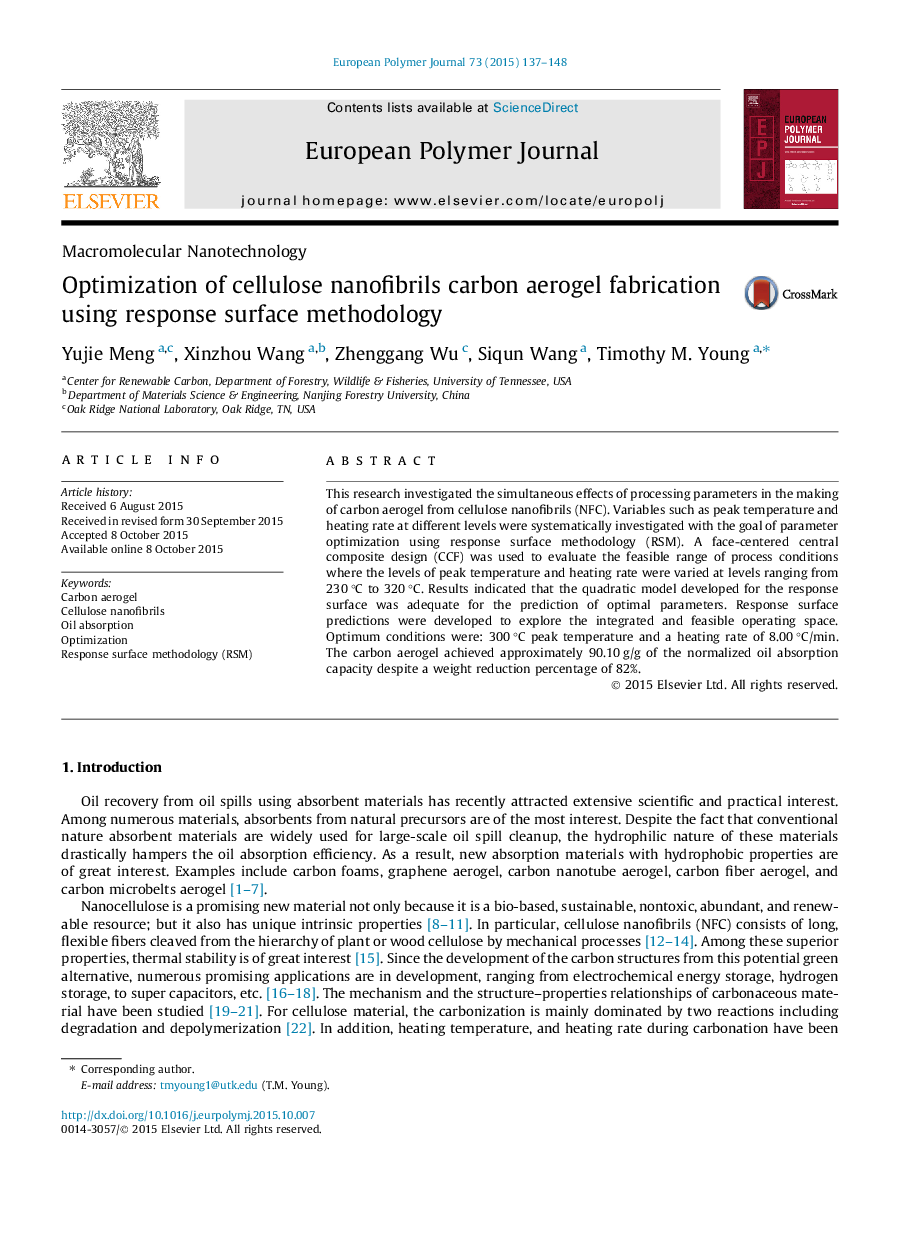| Article ID | Journal | Published Year | Pages | File Type |
|---|---|---|---|---|
| 1400354 | European Polymer Journal | 2015 | 12 Pages |
•Carbon aerogel has excellent oil absorption capacities (over 90 times its own weight).•Carbon aerogel has high porosity, ultra-low density and hydrophobic properties.•Processing parameters were optimized by statistical response surface method.•Feasible processing operation region was found by overlaying two response surfaces.
This research investigated the simultaneous effects of processing parameters in the making of carbon aerogel from cellulose nanofibrils (NFC). Variables such as peak temperature and heating rate at different levels were systematically investigated with the goal of parameter optimization using response surface methodology (RSM). A face-centered central composite design (CCF) was used to evaluate the feasible range of process conditions where the levels of peak temperature and heating rate were varied at levels ranging from 230 °C to 320 °C. Results indicated that the quadratic model developed for the response surface was adequate for the prediction of optimal parameters. Response surface predictions were developed to explore the integrated and feasible operating space. Optimum conditions were: 300 °C peak temperature and a heating rate of 8.00 °C/min. The carbon aerogel achieved approximately 90.10 g/g of the normalized oil absorption capacity despite a weight reduction percentage of 82%.
Graphical abstractFigure optionsDownload full-size imageDownload as PowerPoint slide
